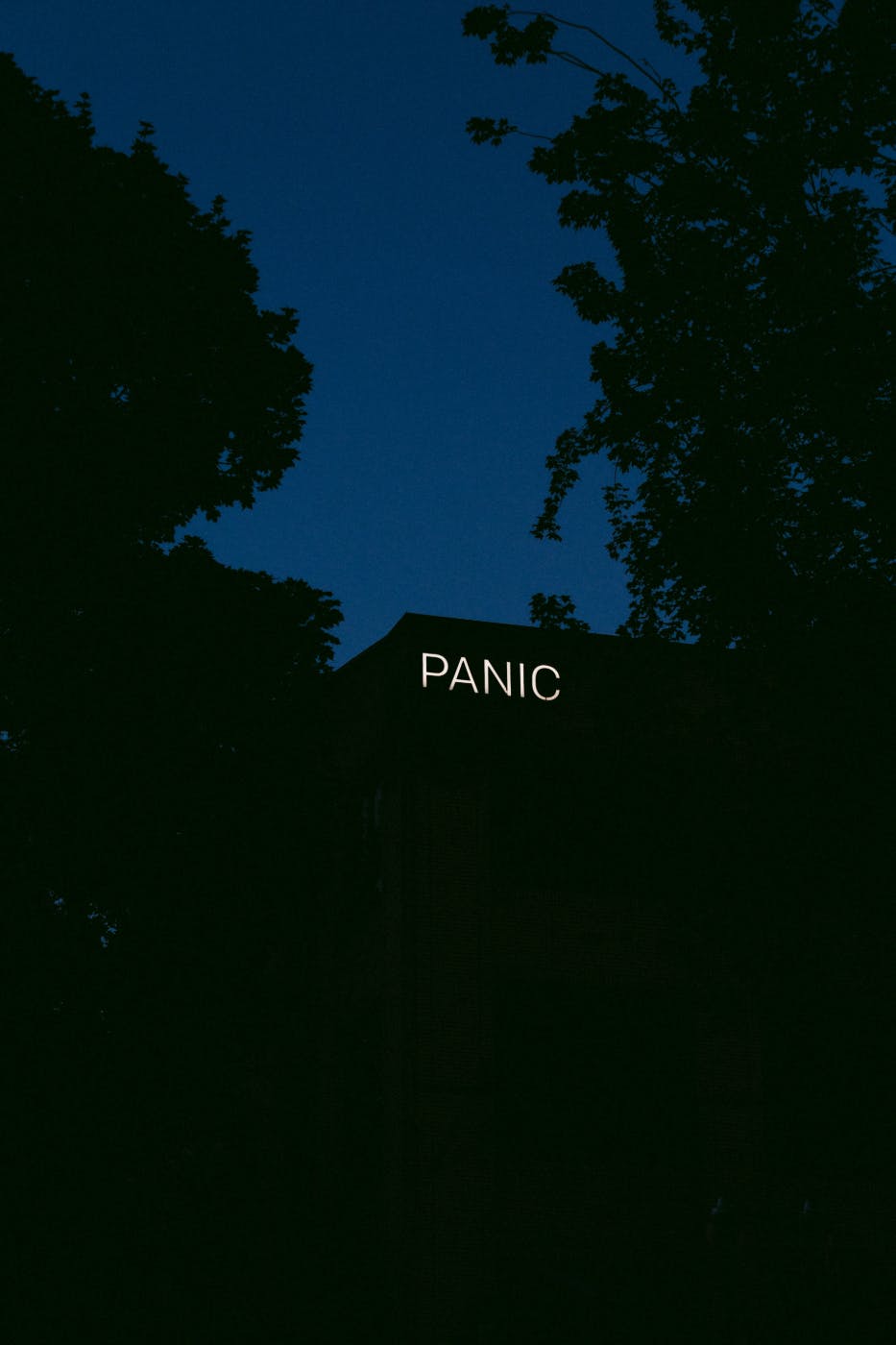
It doesn’t matter whether you’re on a stage, behind a pitch deck, or deep in a Figma file—creative work today is often judged by how quickly it can deliver visible results.
The Return, and the Realization
A few years ago, I stepped into a casting office for the first time in six months. I’d just recovered from hip surgery and was finally ready to get back to work. Before the break, I had been immersed in the kind of creative work that fills you up—performing Macbeth, building characters, rehearsing for weeks, and living in the rhythm of the process. But now I was back in front of a camera, auditioning for a one-line role I didn’t get. Or the next one. Or the one after that.
And something about that moment—shaky footing, old doubts, the quiet desperation of trying to prove I still belonged—made me think about branding.
Strange connection? Maybe not.
In that room, I was confronting the same tension that creative professionals face every day: the pressure to perform quickly, perfectly, and visibly—to deliver the outcome before the process is even allowed to start. It’s the same pressure copywriters feel when a campaign goes flat. The same pressure strategists feel after a pitch falls short. The same pressure brands feel when the numbers don’t go up and to the right fast enough.
That’s when I remembered something I had let go of during recovery: my process. Not the product, not the result, not the applause or the metrics—just the work. The step-by-step, moment-to-moment choices that shape how I show up.
It hit me again recently while doing work with ThoughtLab. We help brands define who they are, what they stand for, and how they tell their story—but that can’t happen without process. Not a corporate checklist. Not a scramble to chase clicks. A real, honest, personalized process. The kind that gives creative work its backbone, and keeps brands from falling into the trap of chasing outcomes they can’t control.
We talk a lot in this industry about impact. But maybe it’s time to talk about input. About the value of returning to the work, not just for the sake of performance, but for the sake of identity.
The Pressure to Perform
It doesn’t matter whether you’re on a stage, behind a pitch deck, or deep in a Figma file—creative work today is often judged by how quickly it can deliver visible results. We don’t just want impact; we want immediate proof. A spike in engagement. A chart with an upward arrow. A client who says “nailed it” on the first draft.
And while results matter—of course they do—they can become dangerous when they eclipse everything else. Creative teams begin to chase validation instead of discovery. Brand builders stop exploring nuance and start second-guessing what the algorithm wants. Copywriters lose their voice in favor of "what's trending."
The business world isn’t designed to give us space to find our process. It demands proof that we already know it. And when you're caught in that cycle—job to job, pitch to pitch, campaign to campaign—it's easy to forget how to think creatively, how to take risks, or even how to know when you're proud of your work.
The irony is, the more we chase outcomes, the further we drift from the very thing that produces good outcomes in the first place: a strong, repeatable, self-defined creative process.
This is where branding work becomes especially vulnerable. When a brand feels uncertain or under pressure, it tends to overcorrect—trying to be everything to everyone, mimicking competitors, obsessing over metrics, or launching campaigns that look polished but feel hollow. And internally, teams start to fracture. People burn out. Great talent gets sidelined. The focus becomes survival, not substance.
That’s why remembering—and returning to—process isn’t just good advice. It’s essential.
But the question remains—what happens when your environment doesn’t support process? When the system is built for speed, not thought? You build your own.

The Built-In vs. the Self-Made Process
Some environments are generous with time. They build process into the work itself—iterative timelines, collaborative space, moments for reflection and revision. Others, especially in agency or client-driven work, offer none of that. You're expected to deliver now, hit the mark fast, and adapt on the fly.
In theater, process is structurally embedded—rehearsals, table work, tech, previews. In branding? Not so much. You might get a kickoff call and a deadline. That’s it.
If you're lucky, you work somewhere that makes room for exploration. But most of the time, especially in fast-paced marketing or content-driven environments, it’s on you to build your own process inside the chaos. That means:
- Defining how you approach projects, even when timelines don’t allow for it.
- Knowing how you move from blank page to final draft.
- Creating small rituals that center your thinking, even under pressure.
- Setting internal goals that matter even when external ones shift.
The problem isn’t that business lacks structure—it’s that the structure often values speed and output over depth and identity. That’s where a personal process becomes not just helpful, but vital. Without it, you're reactive. You lose clarity. And you end up chasing results that aren’t even yours.
For brand teams, creatives, and strategists alike, having a defined process is how you maintain direction. It's how you keep your voice, your focus, and your standards intact—even when a project doesn't land or the feedback derails you. It’s how you prevent one bad outcome from becoming a bad pattern.
But it’s not enough to know you need a process. You have to build it. You have to protect it. And that starts with being specific.
Building a Personal Process
Process isn’t something you’re handed—it’s something you build, slowly, through experience, reflection, and self-awareness. It doesn’t have to be formal. It doesn’t have to be pretty. But it does have to be yours.
In branding and creative work, your personal process is what keeps you grounded when the brief changes last-minute, when a client doesn’t “get it,” or when a campaign doesn’t perform the way you hoped. It’s how you measure progress internally, even when the external metrics fall short.
So what does a personal process look like? It might include:
- Pre-work reflection: Before starting a project, identify what you’re trying to accomplish—not for the client, but for yourself. Are you aiming to sharpen a skill? Try a new technique? Refine your voice?
- Mid-project checkpoints: Carve out time to step back and ask: Am I aligned with the story I’m trying to tell? Have I fallen into reactive mode?
- Post-mortems with purpose: After delivery, don’t just ask “Did the client like it?” Ask, “Did I stay true to my process? What worked? What didn’t? What will I carry forward?”
- Non-negotiables: Have a few personal standards—details you always attend to, questions you always ask, rituals that keep your thinking clear. These become anchors in the storm.
For a brand, this might mean:
- Always grounding messaging in your brand’s core values before exploring creative options.
- Never skipping audience empathy work, no matter how fast the turnaround.
- Building internal checkpoints to review tone, consistency, and clarity before launch.
For a strategist or creative, it might mean:
- Taking 10 minutes before every pitch to clarify what you believe the story is.
- Writing one paragraph in your own voice before translating it to “brand voice.”
- Asking yourself, “What am I learning from this?”—even when the outcome doesn’t go your way.
The goal of personal process isn’t perfection. It’s agency. It's clarity. It's the ability to separate your worth from a client’s response, a campaign’s ROI, or the whims of a trend cycle.
Because when you don’t have that clarity—when your process disappears—you don’t just risk burnout. You risk losing your sense of self in the work.

The Danger of Outcome Addiction
We all want results. That’s not the problem.
The problem is when results become the only thing that matters—when we measure the value of a project, or even ourselves, solely by the outcome: the sale, the click, the client approval, the viral moment.
That mindset is seductive, especially in fast-paced, high-stakes environments. It can start subtly:
- You skip reflection because there’s no time.
- You mimic what worked for someone else.
- You stop taking risks because failure feels personal.
But over time, the cost becomes obvious. When outcome is everything, process gets squeezed out. And when you lose your process, you lose your voice. You lose your curiosity. You lose the part of you that made the work good to begin with.
For individuals, this shows up as burnout, imposter syndrome, or that creeping sense that you’re faking it on every Zoom call. For brands, it shows up in inconsistent messaging, reactive strategy, and campaigns that feel hollow. You can’t build trust—or identity—when you’re constantly pivoting to chase whatever worked last week.
And worse, outcome addiction makes you vulnerable. Vulnerable to trends. To bad feedback. To doubt. To anyone who claims they know the “secret” to success, if you’ll just follow their method.
The antidote? Return to your process.
Your process is the only thing that’s truly yours. It’s what keeps you from panicking when the results don’t show up. It’s what helps you evolve on purpose, not by accident. It’s what allows you to learn something from every project—even the ones that flop.
The good news is, you don’t have to wait for permission to re-center yourself. You can step back into your process anytime. All it takes is a shift in focus.
Process as Brand Identity
The idea of process isn’t just personal—it’s strategic. In fact, for many of the world’s most trusted and enduring brands, process is the brand.
Consider the brands that consistently show up with clarity and purpose. Their success isn’t a string of lucky outcomes—it’s the result of a well-defined, rigorously protected internal process:
- Patagonia doesn’t just make outdoor gear—it follows a process rooted in environmental responsibility, transparency, and long-term thinking. That process shows up in their products, their campaigns, their activism, even in how they repair old gear instead of pushing new sales.
- Apple famously obsesses over its design process. From packaging to user interface to copy tone, there’s a method behind every choice. And that method is part of the reason people trust the brand.
- LEGO has a product and content development process that invites iteration, user input, and cross-generational storytelling—and that process drives both loyalty and innovation.
Even in the agency world, clients don’t just buy outcomes—they buy your way of thinking. A clear, consistent, and transparent process gives clients confidence, especially in the messy middle when results aren’t yet visible. At ThoughtLab, for example, we’re often called in when brands are feeling lost. They want clarity. Identity. Direction. What we bring isn’t just creativity—it’s process. It’s the discipline of slowing down, asking the right questions, and building a foundation that supports real, lasting growth.
When brands articulate their process—and stick to it—they build trust. Internally, it helps teams stay aligned and focused. Externally, it helps audiences recognize consistency, even across evolving campaigns.
In a world that moves fast and pivots even faster, brands with strong internal process don’t just survive—they stand for something.
And that’s the real goal—for individuals and brands alike. Not just to perform, but to endure. Not just to win the moment, but to keep showing up with purpose.

Summing Up: Stay in the Work
The results will come. Or they won’t. But either way, they can’t define you—not if you’re anchored in something deeper.
Process is what keeps you steady in a volatile industry. It’s what keeps you learning when the work is quiet, and focused when the noise gets loud. Whether you’re a solo creative, a marketing team, or a brand trying to find its voice again, process is what gives your work continuity, clarity, and character. It’s not a fallback. It’s the foundation.
And if you’ve let it slide—if you’ve been chasing quick wins or feeling the slow creep of doubt—it’s okay. You can start again. You can get quiet, get specific, and get back to the work. That’s where you’ll find yourself. That’s where the real progress lives.
At ThoughtLab, we help brands do exactly that. Not just polish the surface, but define and protect the process that shapes everything underneath. Because outcomes are unpredictable. But a strong process? That’s where the good stuff begins.

